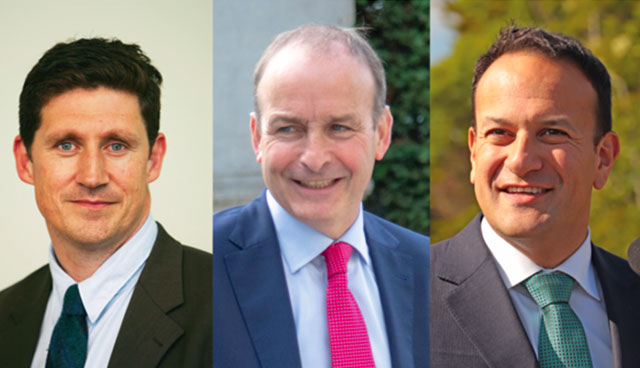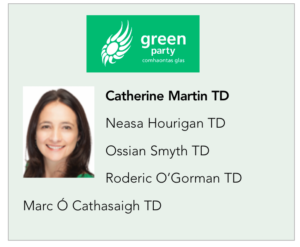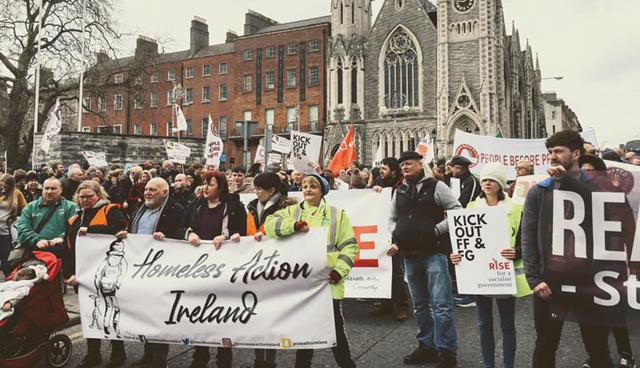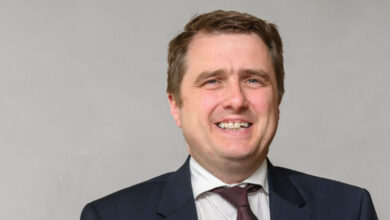Government formation: An interminable road

Over 120 days since General Election 2020, formal government formation talks are well progressed and appear to be gathering pace. If and when an agreed programme for government does materialise, achieving the assent of three different party memberships could prove to be a final stumbling block. While unlikely, General Election 2020 2.0 cannot be ruled out.
There is no constitutional limit on the length of time that the current caretaker government can remain in situ. Rather, the Taoiseach and ministers of an outgoing government are obliged by the Constitution to continue to hold office until successors have been appointed. The period in which government formation talks can occur is indefinite.
Hindered somewhat by Covid-19, 2020 has long surpassed the record 70 days required to establish a government after General Election 2016. Within Europe, such a scenario is not unprecedented and the fragmented parliamentary systems of Belgium and the Netherlands often result in lengthy post-election stalemate.
Until now, most actions taken in response to Covid-19 have been dictated by public health professionals. Tensions are now evident. For instance, several ministers have spoken in favour of one metre social distancing rather than the two metres advocated by Chief Medical Officer Tony Holohan.
In the coming weeks, as industry representatives and others engage in lobbying, significant political decisions pertaining to the implementation of the Roadmap for Reopening Society and Business will be required of the caretaker cabinet. This process will substantially increase the need for accountability and transparency, while exposing the deficit in democratic legitimacy which currently permeates the legislative process.
In the meantime, the formulation of a broad left coalition seems as unlikely today as it did in the immediate aftermath of February’s General Election. Such a collaboration would be comparable to the 1948 interparty government which dislodged Fianna Fáil after 16 years. It appears that Sinn Féin, Labour, the Social Democrats, the Greens and Solidarity/PBP are unable or unwilling to commit to the concessions required to dispossess Fine Gael of power.
Sinn Féin has objected to its exclusion from negotiations with either Fianna Fáil or Fine Gael as a ‘betrayal’ of the ‘mandate for change’. “Fianna Fail and Fine Gael have held power for almost a century. They want to have it all their own way. They seek to obstruct the alternative politics and the appetite of the people for change. The people didn’t vote for five more years of Fianna Fáil and Fine Gael,” leader Mary Lou McDonald TD contends. That being said, a deal is far from a foregone conclusion and the party would be more than willing to negotiate should the current talks fail.
Party negotiating teams for government formation talks


Framework document
Conversely, one significant comfort for Sinn Féin has been the success of its electoral surge in finally driving the duopoly of Fine Gael and Fianna Fáil together for the first time in the history of the State, irreversibly transforming the political landscape. The party is poised to lead the parliamentary opposition.
The draft document between Fianna Fáil and Fine Gael “to facilitate negotiations with other parties on a plan to recover, rebuild and renew Ireland after the Covid-19 emergency” acknowledged the unparalleled challenges facing the State.
Framing the “Covid-19 Emergency” as analogous to The Emergency during the Second World War, the document affirms: “We know that there is no going back to the old way of doing things.” Referencing the contribution of each party in “advancing the Irish nation”, it maintains that a resilient government with a clear majority is required, to deliver “a programme of national recovery across its lifetime”.
With an overarching “focus on wellbeing” the framework, which will form the spine of an agreed programme for government contains 10 broad “core missions”. Facilitating a space within which smaller parties might be enticed to negotiate finer detail, these are:
1. reigniting and renewing the economy;
2. universal healthcare;
3. housing for all;
4. a new social contract;
5. a green new deal;
6. a better quality of life for all;
7. supporting young Ireland;
8. opportunities through education and research;
9. a shared island; and
10. at the heart of Europe, global citizenship.
Suggesting that his party would be “laughed at” if it published such a document, Sinn Féin’s finance spokesman Pearse Doherty TD asserted: “The reality is that this is a document that is designed at doing what the two parties want to do and that is keep Sinn Féin out of government.”
FF/FG
The framework document effectively heralded a cessation of hostilities between Fianna Fáil and Fine Gael at parliamentary party level, publicly at least. However, as the State’s two erstwhile superpowers attempt to carve up a coalition arrangement, a cold war, replete with its own proxy battles, is likely to wage just below the surface. Already, on several occasions, tensions have bubbled out from negotiations, the very existence of which have faced outright internal opposition in both parties.
For instance, a war of words erupted when it was reported in The Irish Times that on the order of Housing Minister Eoghan Murphy TD, officials were drafting contingency plans for staging an election during the ongoing pandemic. Fianna Fáil TD Barry Cowen accused Fine Gael of acting in bad faith and “putting party before country” while Thomas Byrne TD suggested that arrangements for polling in nursing homes were “utterly sick”.
This incited Fine Gael to release a statement, asserting: “The fact that this prompted an attack on Fine Gael by two senior Fianna Fáil spokespeople was unwarranted and has damaged the talks process. It is also rather ironic that one of the two had recently claimed falsely that both parties had agreed to hold a referendum within weeks of forming a Government, presumably during a pandemic.”
Leo Varadkar TD subsequently contacted Micheál Martin TD directly to object to the comments made by his two deputies while on RTÉ, Tánaiste Simon Coveney TD sought to soothe the dispute, assuring: “We are serious about forming a government. We hope to be able to do that by the middle of [June] and I hope that people will take that in good faith.”
This spat gives some indication as to the level of distrust that still exists between these bitterest of rivals. It is well known that senior Fine Gael figures are at best ambivalent to any coalition arrangement with Fianna Fáil. This wing of Fine Gael would much rather face another election, given the party’s substantial rebound in the polls during the pandemic.
With no change for four weeks, the latest Red C poll captures support for Fine Gael at 35 per cent, up 9 per cent on its vote share in General Election 2020. The party has manoeuvred into a win-win scenario. If negotiations succeed, it will enter government for a third successive term. If talks fail, it will contest a general election with a much strengthened hand, likely consolidating its parliamentary presence.
Meanwhile, Fianna Fáil languishes at 17 per cent, down 7 per cent on its share of the vote since the election in February. In what could be the last roll of the dice by leader Micheál Martin, he has staked his political existence against a second election.
Overall, the ongoing truce has facilitated a marriage of political expediency rather than a union of two kindred spirits. The longevity of such a loveless relationship between two mutually distrustful parties is questionable. However, for now and while under their current respective leaderships, who have coalesced around the exclusion of Sinn Féin, it seems to be the only viable show in town.
Green Party
In response to the Fianna Fáil and Fine Gael joint framework document, the Green Party published 17 questions (figure 1) and invited responses to each “to provide the necessary clarity before any formal negotiations might take place”.
|
Figure 1 Green Party questions in response to the Fianna Fáil and Fine Gael joint framework document 1. Will you commit to an average annual reduction in greenhouse gas emissions of at least 7 per cent? 2. Will you commit to an ambitious programme of development of, and investment where necessary in, renewable energy infrastructure including off-shore wind, grid and interconnector upgrades and community energy projects? 3. Will you commit to ending the issue of exploration licences for offshore gas exploration? 4. Will you commit to ceasing the construction of new fossil fuel infrastructure, particularly LNG import terminals that could allow the entry of unconventional liquefied natural gas into the Irish energy mix? 5. Will you commit to the exclusive provision of public housing, social housing and cost rental housing on public lands? 6. Will you commit to prioritising urban renewal in line with a ‘Town Centre First’ model? 7. Will you commit to a comprehensive deep retrofit programme as part of a programme for government? 8. Will you commit to convening a social dialogue process representative of all key stakeholders with a view to developing of a new social contract? 9. Will you commit to working towards ending the Direct Provision system and replacing it with a not-for-profit system based on accommodation provided through existing or new approved housing bodies? 10. Will you commit to setting us on a clear and certain path to meeting our UN obligation to spend 0.7 per cent of our national income on Overseas Development Aid? 11. Will you commit to the development of a national land use plan which will inform both the new national economic plan and the new social contract? 12. Will you commit to rebalancing our transport infrastructure spend, dedicating at least 20 per cent of infrastructure expenditure in transport to cycling and walking and aensuring that other public transport infrastructure investment is allocated at least two-thirds of the remaining infrastructure budget? 13. Will you commit to establishing a trial of Universal Basic Income (UBI) within the lifetime of the next Government? 14. Will you commit to the revision of the existing National Development Plan so that we can meet our New Social Contract goals and climate change targets? 15. Will you commit to a review of the State’s response to the Covid-19 pandemic, undertaken by the Oireachtas, to enable us to learn lessons for the future? 16. Will you provide a clear and detailed analysis of how your Joint Framework Document is to be financed? 17. Will you commit to publishing and implementing a Green Procurement Policy? |
Formal negotiations between Fine Gael, Fianna Fáil and the Green Party began on 11 May and detailed policy discussions were subdivided into parallel sessions. The Green parliamentary party voted to enter government formation talks, with leader Éamon Ryan TD expressing his belief that these might last “a few weeks”. Since then, Covid-19 restrictions have limited discussions to two-hour windows, hampering momentum.
Interestingly, the Green Party’s negotiating team is led by its deputy leader Catherine Martin TD, initially an outright opponent of the negotiations. The team is tasked with “fighting for our policies, our principles and our membership” to “develop a deal that respects our mandate with a view to presenting that agreement to Green Party members for approval”.

If a proposal that prioritises climate action is not forthcoming, the party has threatened to withdraw from negotiations and enter opposition. Indeed, any resulting programme for government will require the support of a two-thirds majority of the Green Party’s membership. This vote is widely regarded as the most mercurial ingredient of any government formation deal.
The Greens are conscious of their previous period in government (2007-2011), when Éamon Ryan served as Minister for Communications, Energy and Natural Resources. The coalition with Fianna Fáil was a bruising experience. All six of the party’s then-TDs subsequently lost their seats when its share of the vote in General Election 2011 plummeted below the 2 per cent threshold required to access State funding.
Much to the chagrin of the Green Party, the Fine Gael negotiating team led by Coveney has emphasised the challenges facing the public finances. It is likely that, even if the incoming government dulls the pain of deficit reduction by prioritising borrowing and spending for the first half of its existence, difficult or unpopular decisions will inevitably be required and electoral punishment may well follow.
While the Greens are wary of being led back into austerity politics and deficit reduction at the insistence of Fianna Fáil and Fine Gael, opportunities to progress the green agenda are obvious to the party’s pragmatists. Within the larger two parties, however, there is particular disquiet in relation to the Green demand for an 7 per cent average annual reduction in carbon emissions and the potential impact on their rural and agricultural bases.
Speaking to RTÉ, outgoing Minister of State for Training and Skills John Halligan suggested: “Fianna Fáil can’t stand Fine Gael essentially and Fine Gael can’t stand Fianna Fáil essentially; none of them can stand the Green Party.” Regardless, ‘the enemy of my enemy is my friend’. Applying this proverb, it is in the common interest of both Leo Varadkar and Micheál Martin to deny Mary Lou McDonald’s party a place in government, even if it means shrugging off the weight of history and papering over myriad disparities.
Caretaker Taoiseach Varadkar has indicated his determination to ensure that any coalition arrangement will be resilient, though, simultaneously, he will not do a deal at any cost.
If agreement is reached, it is anticipated that talks will then open to independent TDs. Though, as is the case with the Green Party, the Fianna Fáil membership and Fine Gael’s electoral college must ratify any proposed programme for government. As such, another election is still possible. The power to dissolve the 33rd Dáil rests solely with the caretaker Taoiseach.





